Issues and Analysis of Uber: A Study
VerifiedAdded on 2023/06/07
|10
|1014
|157
AI Summary
This report analyzes the issues faced by Uber, including legal charges, workplace culture, underpayment of drivers, sexual harassment, and underpayment of taxes. The report also provides recommendations for the company to improve its transparency, decision-making, human resource management, social responsibility, and resource allocation.
Contribute Materials
Your contribution can guide someone’s learning journey. Share your
documents today.
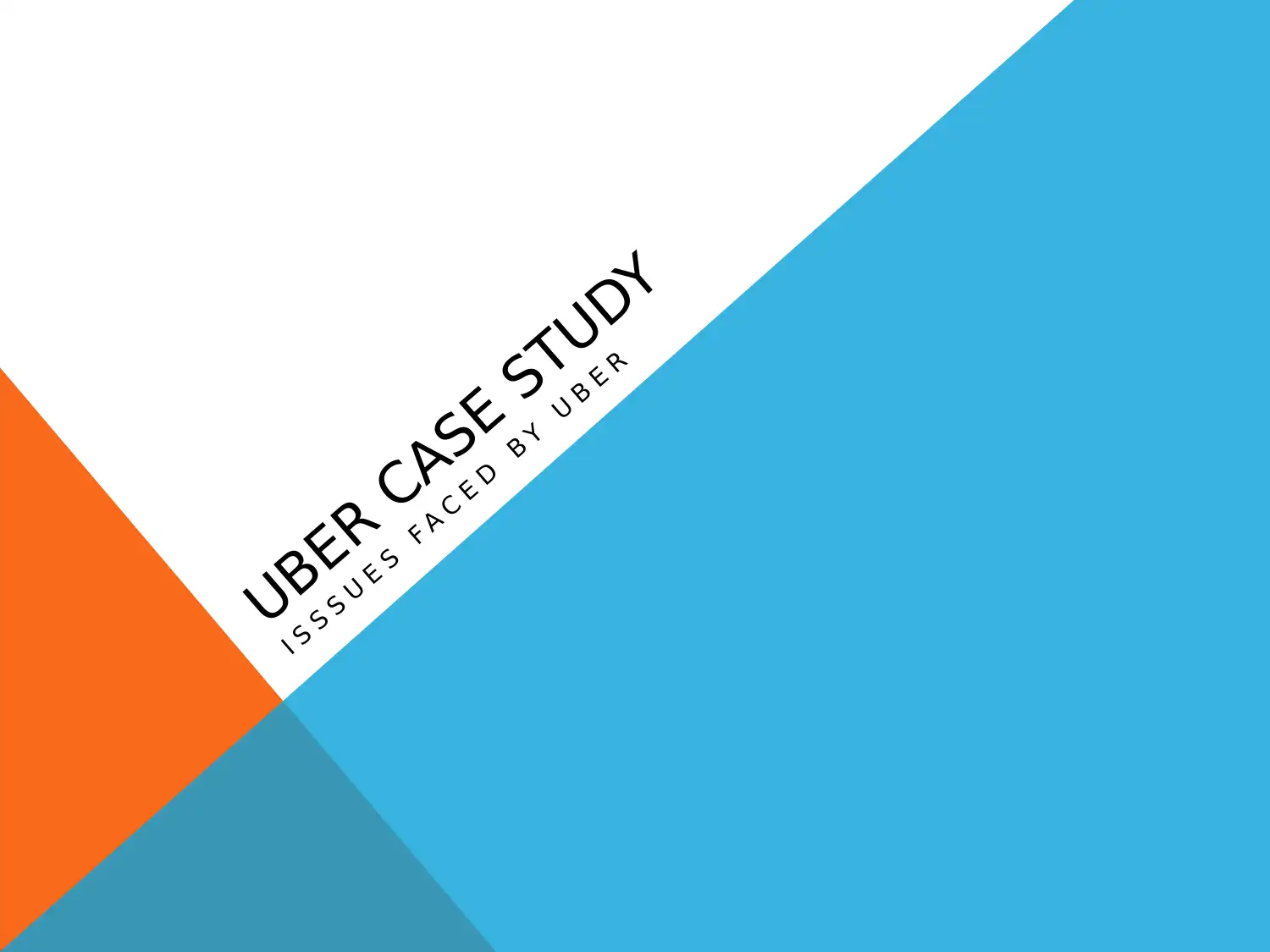
UBER CASE STUDY
I S S S U E S F A C E D B Y U B E R
I S S S U E S F A C E D B Y U B E R
Secure Best Marks with AI Grader
Need help grading? Try our AI Grader for instant feedback on your assignments.
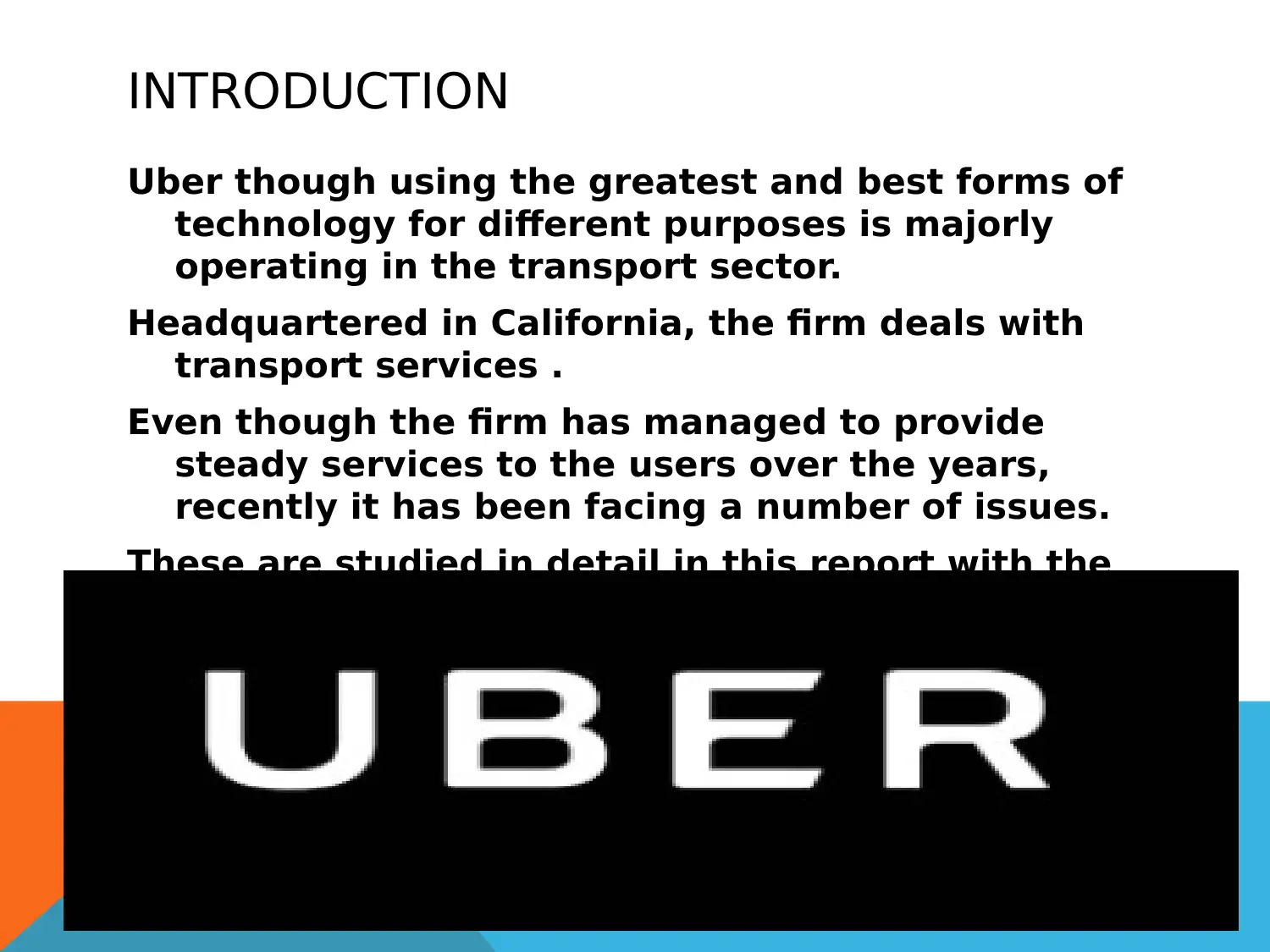
INTRODUCTION
Uber though using the greatest and best forms of
technology for different purposes is majorly
operating in the transport sector.
Headquartered in California, the firm deals with
transport services .
Even though the firm has managed to provide
steady services to the users over the years,
recently it has been facing a number of issues.
These are studied in detail in this report with the
help of detailed analysis and recommendations
are provided for the same.
Uber though using the greatest and best forms of
technology for different purposes is majorly
operating in the transport sector.
Headquartered in California, the firm deals with
transport services .
Even though the firm has managed to provide
steady services to the users over the years,
recently it has been facing a number of issues.
These are studied in detail in this report with the
help of detailed analysis and recommendations
are provided for the same.
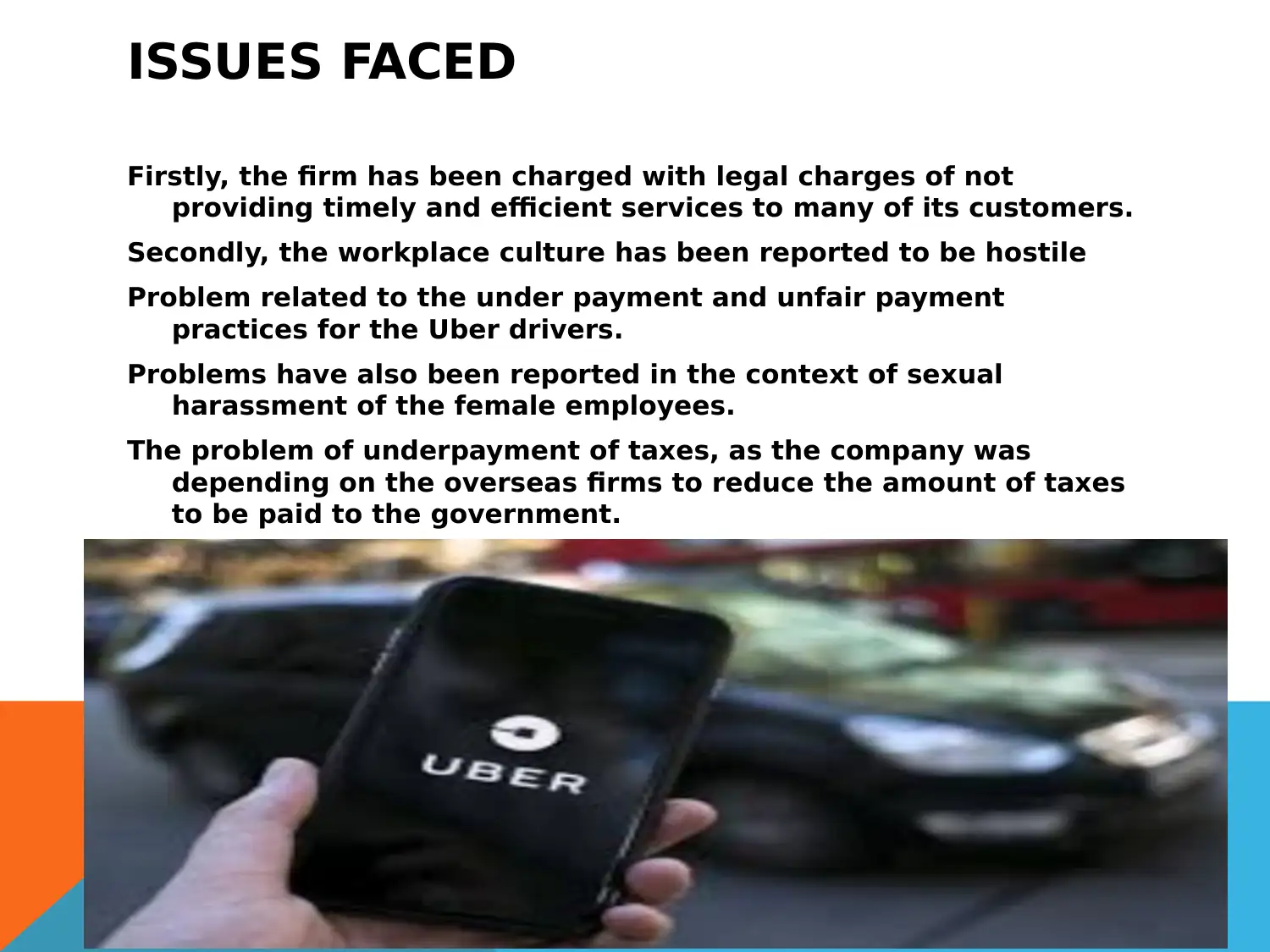
ISSUES FACED
Firstly, the firm has been charged with legal charges of not
providing timely and efficient services to many of its customers.
Secondly, the workplace culture has been reported to be hostile
Problem related to the under payment and unfair payment
practices for the Uber drivers.
Problems have also been reported in the context of sexual
harassment of the female employees.
The problem of underpayment of taxes, as the company was
depending on the overseas firms to reduce the amount of taxes
to be paid to the government.
Firstly, the firm has been charged with legal charges of not
providing timely and efficient services to many of its customers.
Secondly, the workplace culture has been reported to be hostile
Problem related to the under payment and unfair payment
practices for the Uber drivers.
Problems have also been reported in the context of sexual
harassment of the female employees.
The problem of underpayment of taxes, as the company was
depending on the overseas firms to reduce the amount of taxes
to be paid to the government.
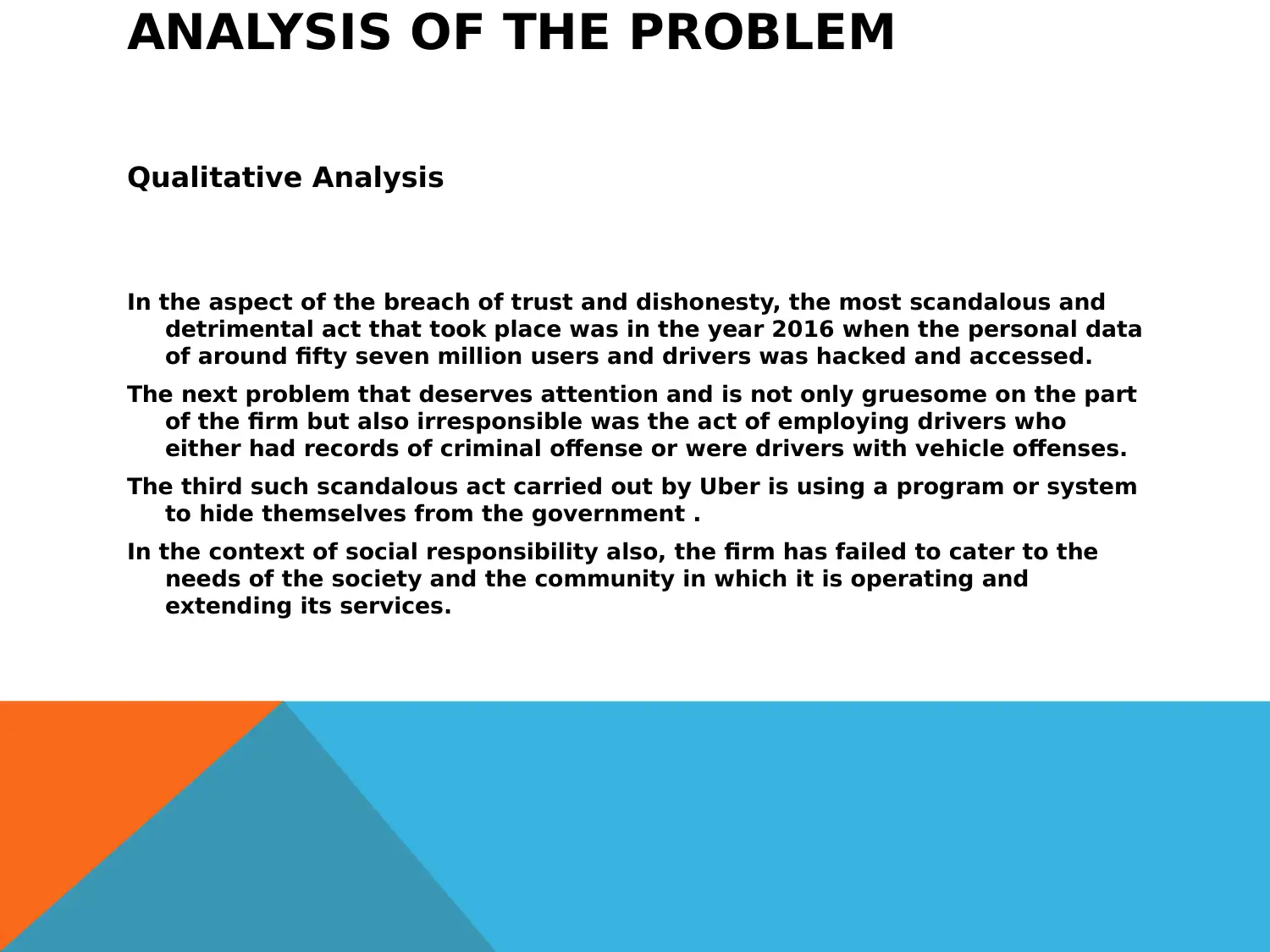
ANALYSIS OF THE PROBLEM
Qualitative Analysis
In the aspect of the breach of trust and dishonesty, the most scandalous and
detrimental act that took place was in the year 2016 when the personal data
of around fifty seven million users and drivers was hacked and accessed.
The next problem that deserves attention and is not only gruesome on the part
of the firm but also irresponsible was the act of employing drivers who
either had records of criminal offense or were drivers with vehicle offenses.
The third such scandalous act carried out by Uber is using a program or system
to hide themselves from the government .
In the context of social responsibility also, the firm has failed to cater to the
needs of the society and the community in which it is operating and
extending its services.
Qualitative Analysis
In the aspect of the breach of trust and dishonesty, the most scandalous and
detrimental act that took place was in the year 2016 when the personal data
of around fifty seven million users and drivers was hacked and accessed.
The next problem that deserves attention and is not only gruesome on the part
of the firm but also irresponsible was the act of employing drivers who
either had records of criminal offense or were drivers with vehicle offenses.
The third such scandalous act carried out by Uber is using a program or system
to hide themselves from the government .
In the context of social responsibility also, the firm has failed to cater to the
needs of the society and the community in which it is operating and
extending its services.
Paraphrase This Document
Need a fresh take? Get an instant paraphrase of this document with our AI Paraphraser
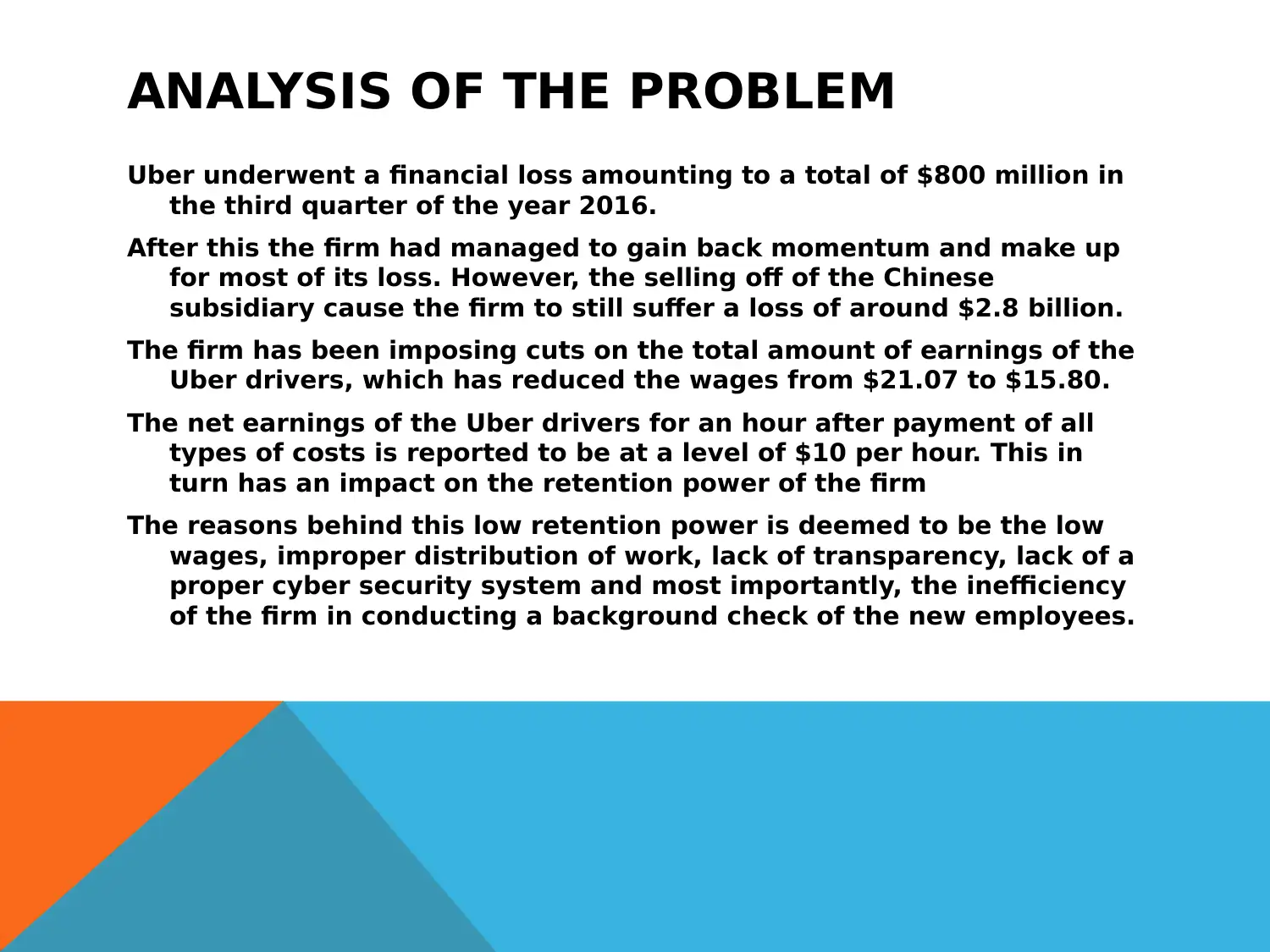
ANALYSIS OF THE PROBLEM
Uber underwent a financial loss amounting to a total of $800 million in
the third quarter of the year 2016.
After this the firm had managed to gain back momentum and make up
for most of its loss. However, the selling off of the Chinese
subsidiary cause the firm to still suffer a loss of around $2.8 billion.
The firm has been imposing cuts on the total amount of earnings of the
Uber drivers, which has reduced the wages from $21.07 to $15.80.
The net earnings of the Uber drivers for an hour after payment of all
types of costs is reported to be at a level of $10 per hour. This in
turn has an impact on the retention power of the firm
The reasons behind this low retention power is deemed to be the low
wages, improper distribution of work, lack of transparency, lack of a
proper cyber security system and most importantly, the inefficiency
of the firm in conducting a background check of the new employees.
Uber underwent a financial loss amounting to a total of $800 million in
the third quarter of the year 2016.
After this the firm had managed to gain back momentum and make up
for most of its loss. However, the selling off of the Chinese
subsidiary cause the firm to still suffer a loss of around $2.8 billion.
The firm has been imposing cuts on the total amount of earnings of the
Uber drivers, which has reduced the wages from $21.07 to $15.80.
The net earnings of the Uber drivers for an hour after payment of all
types of costs is reported to be at a level of $10 per hour. This in
turn has an impact on the retention power of the firm
The reasons behind this low retention power is deemed to be the low
wages, improper distribution of work, lack of transparency, lack of a
proper cyber security system and most importantly, the inefficiency
of the firm in conducting a background check of the new employees.
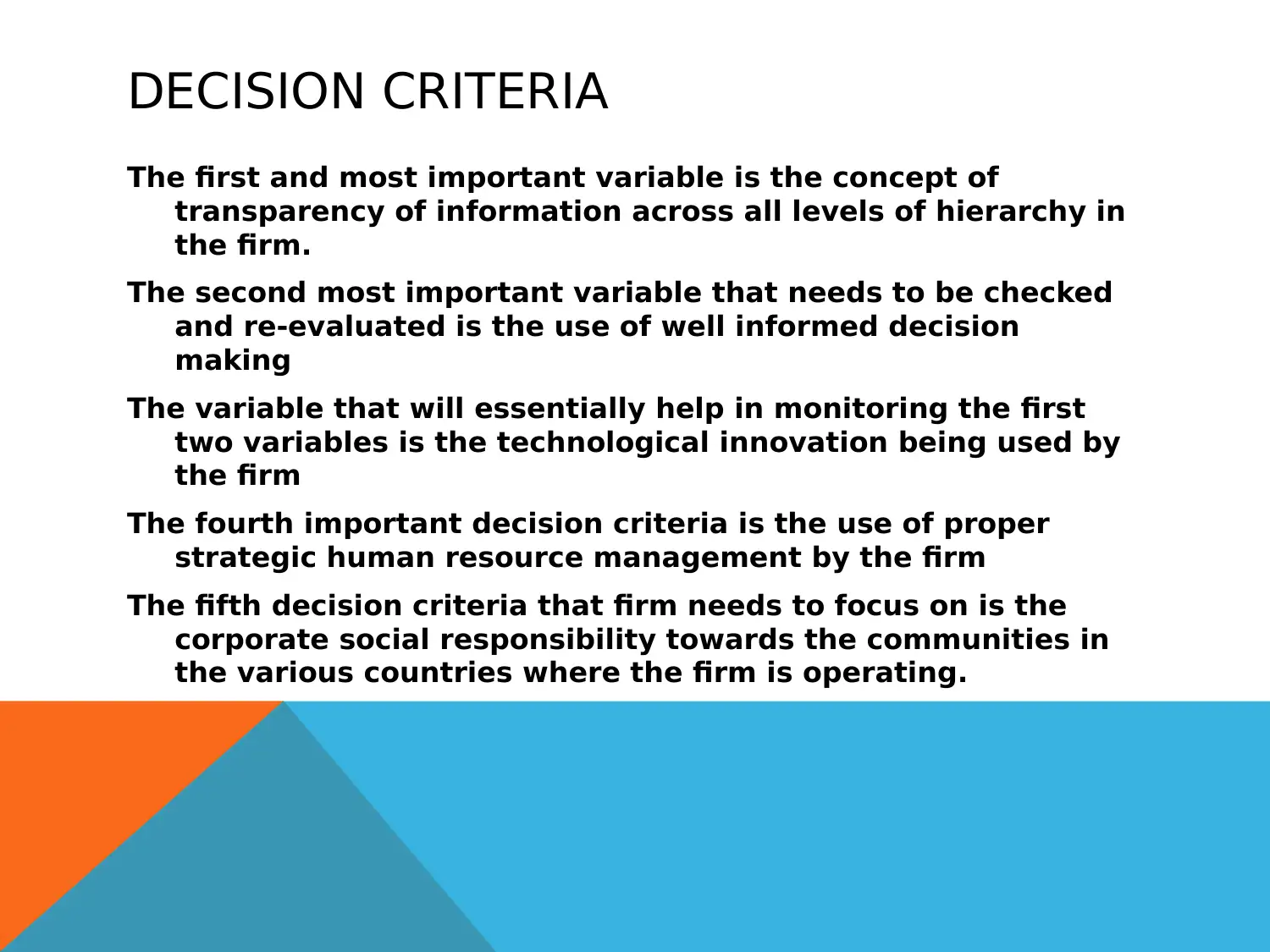
DECISION CRITERIA
The first and most important variable is the concept of
transparency of information across all levels of hierarchy in
the firm.
The second most important variable that needs to be checked
and re-evaluated is the use of well informed decision
making
The variable that will essentially help in monitoring the first
two variables is the technological innovation being used by
the firm
The fourth important decision criteria is the use of proper
strategic human resource management by the firm
The fifth decision criteria that firm needs to focus on is the
corporate social responsibility towards the communities in
the various countries where the firm is operating.
The first and most important variable is the concept of
transparency of information across all levels of hierarchy in
the firm.
The second most important variable that needs to be checked
and re-evaluated is the use of well informed decision
making
The variable that will essentially help in monitoring the first
two variables is the technological innovation being used by
the firm
The fourth important decision criteria is the use of proper
strategic human resource management by the firm
The fifth decision criteria that firm needs to focus on is the
corporate social responsibility towards the communities in
the various countries where the firm is operating.
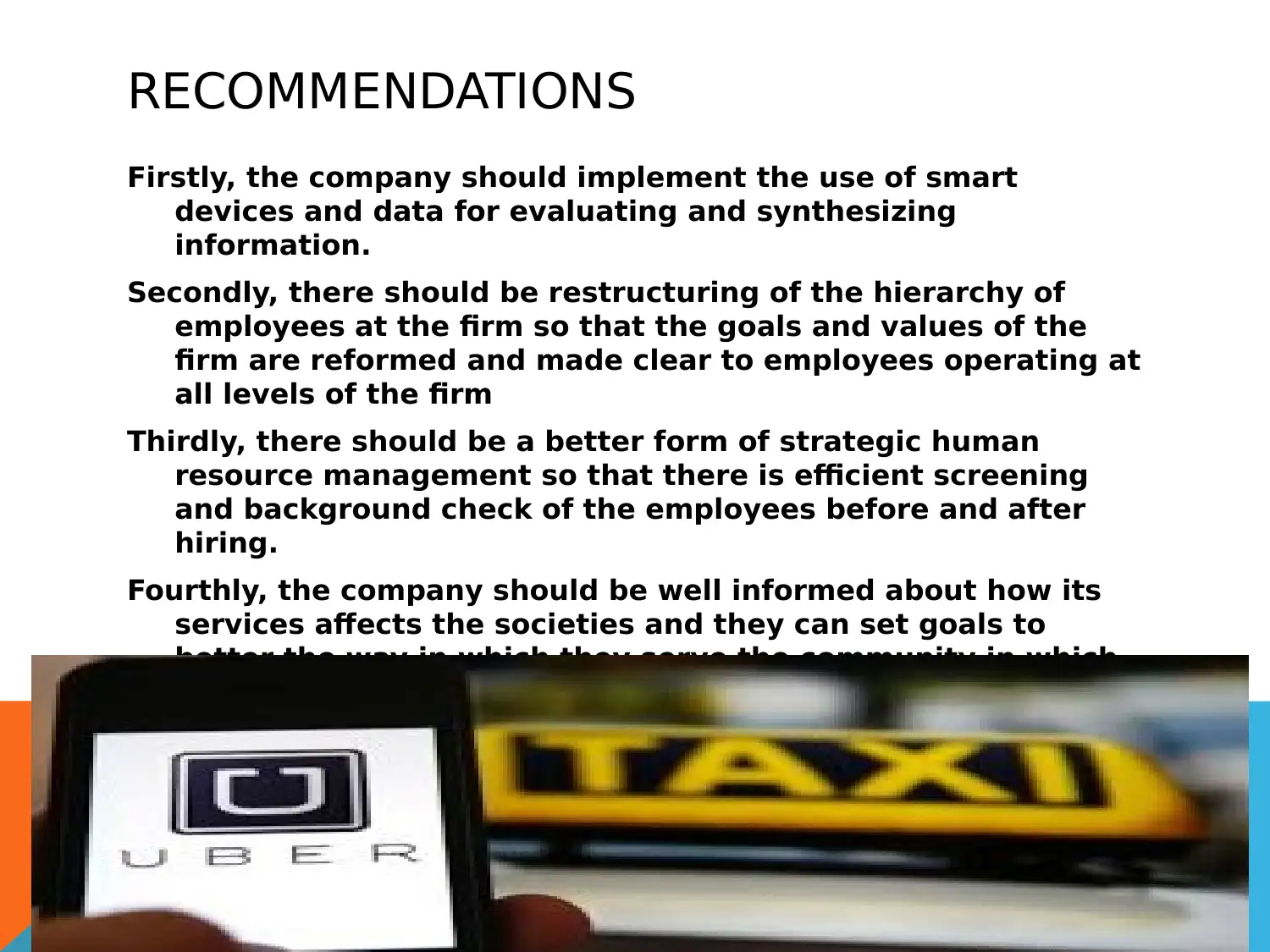
RECOMMENDATIONS
Firstly, the company should implement the use of smart
devices and data for evaluating and synthesizing
information.
Secondly, there should be restructuring of the hierarchy of
employees at the firm so that the goals and values of the
firm are reformed and made clear to employees operating at
all levels of the firm
Thirdly, there should be a better form of strategic human
resource management so that there is efficient screening
and background check of the employees before and after
hiring.
Fourthly, the company should be well informed about how its
services affects the societies and they can set goals to
better the way in which they serve the community in which
they operate
Next, is the channelizing of resources in an efficient way which
will enable the firm to pay the taxes and royalties to the
respective governments.
Firstly, the company should implement the use of smart
devices and data for evaluating and synthesizing
information.
Secondly, there should be restructuring of the hierarchy of
employees at the firm so that the goals and values of the
firm are reformed and made clear to employees operating at
all levels of the firm
Thirdly, there should be a better form of strategic human
resource management so that there is efficient screening
and background check of the employees before and after
hiring.
Fourthly, the company should be well informed about how its
services affects the societies and they can set goals to
better the way in which they serve the community in which
they operate
Next, is the channelizing of resources in an efficient way which
will enable the firm to pay the taxes and royalties to the
respective governments.
Secure Best Marks with AI Grader
Need help grading? Try our AI Grader for instant feedback on your assignments.
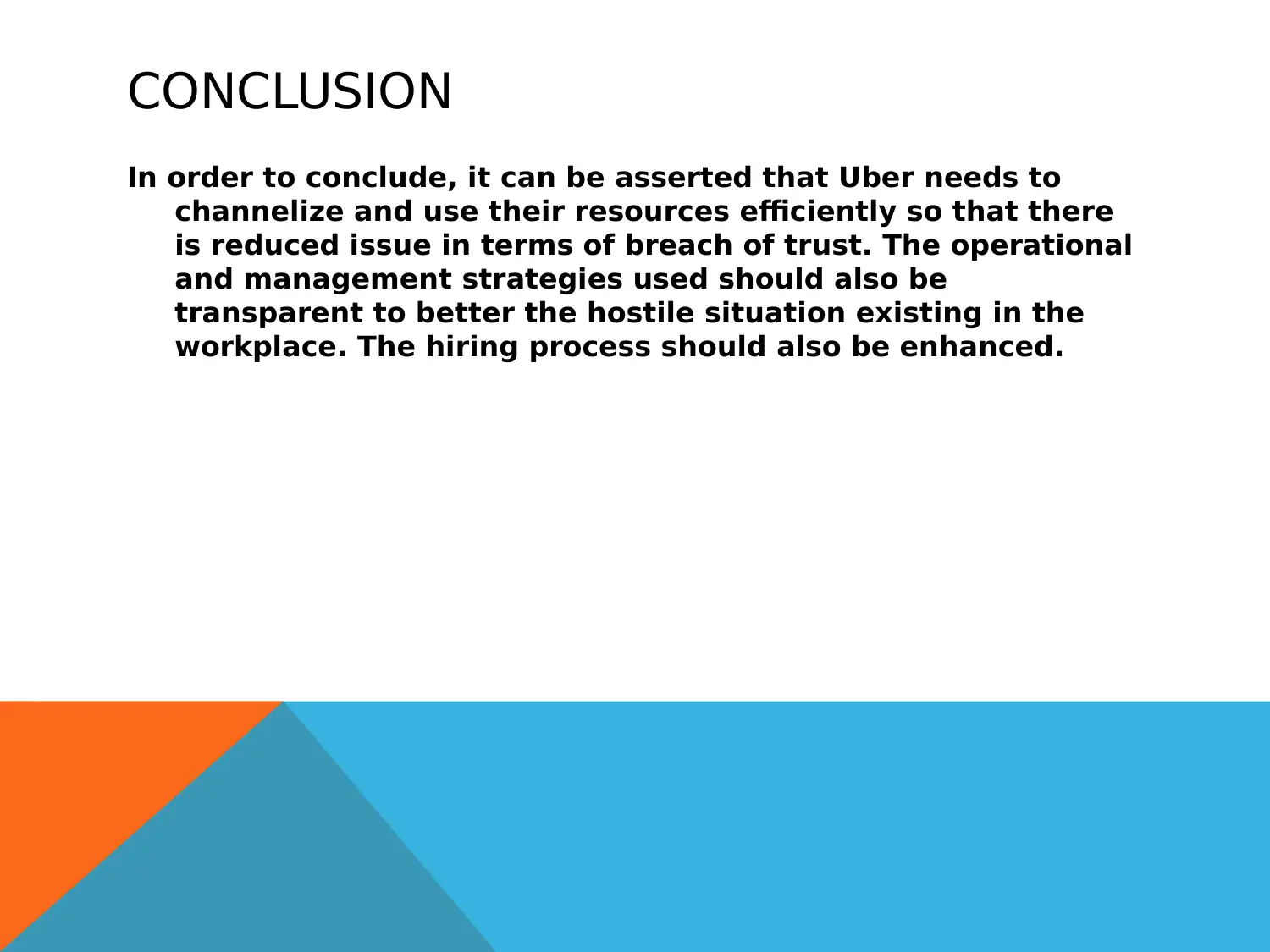
CONCLUSION
In order to conclude, it can be asserted that Uber needs to
channelize and use their resources efficiently so that there
is reduced issue in terms of breach of trust. The operational
and management strategies used should also be
transparent to better the hostile situation existing in the
workplace. The hiring process should also be enhanced.
In order to conclude, it can be asserted that Uber needs to
channelize and use their resources efficiently so that there
is reduced issue in terms of breach of trust. The operational
and management strategies used should also be
transparent to better the hostile situation existing in the
workplace. The hiring process should also be enhanced.
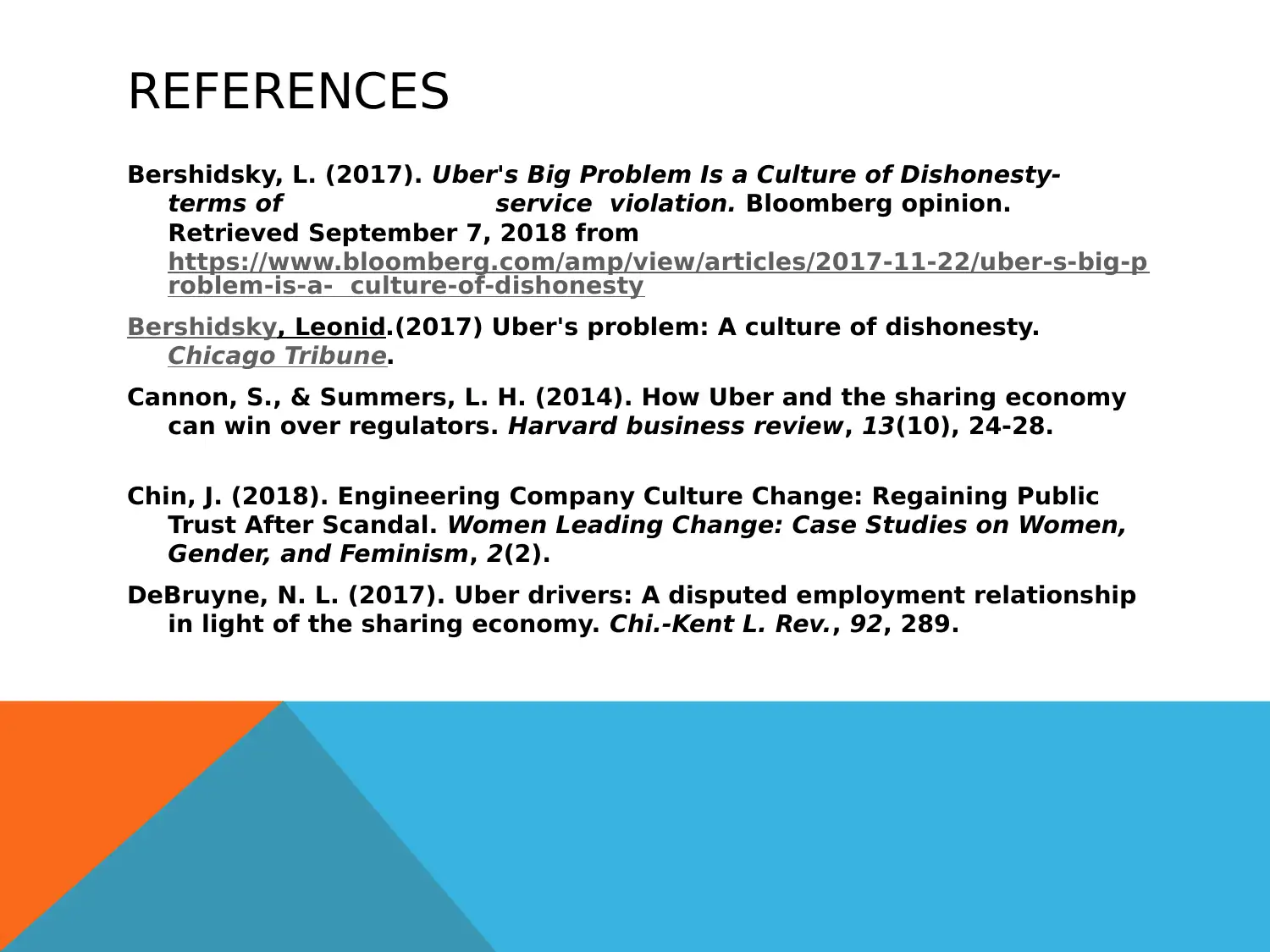
REFERENCES
Bershidsky, L. (2017). Uber's Big Problem Is a Culture of Dishonesty-
terms of service violation. Bloomberg opinion.
Retrieved September 7, 2018 from
https://www.bloomberg.com/amp/view/articles/2017-11-22/uber-s-big-p
roblem-is-a- culture-of-dishonesty
Bershidsky, Leonid.(2017) Uber's problem: A culture of dishonesty.
Chicago Tribune.
Cannon, S., & Summers, L. H. (2014). How Uber and the sharing economy
can win over regulators. Harvard business review, 13(10), 24-28.
Chin, J. (2018). Engineering Company Culture Change: Regaining Public
Trust After Scandal. Women Leading Change: Case Studies on Women,
Gender, and Feminism, 2(2).
DeBruyne, N. L. (2017). Uber drivers: A disputed employment relationship
in light of the sharing economy. Chi.-Kent L. Rev., 92, 289.
Bershidsky, L. (2017). Uber's Big Problem Is a Culture of Dishonesty-
terms of service violation. Bloomberg opinion.
Retrieved September 7, 2018 from
https://www.bloomberg.com/amp/view/articles/2017-11-22/uber-s-big-p
roblem-is-a- culture-of-dishonesty
Bershidsky, Leonid.(2017) Uber's problem: A culture of dishonesty.
Chicago Tribune.
Cannon, S., & Summers, L. H. (2014). How Uber and the sharing economy
can win over regulators. Harvard business review, 13(10), 24-28.
Chin, J. (2018). Engineering Company Culture Change: Regaining Public
Trust After Scandal. Women Leading Change: Case Studies on Women,
Gender, and Feminism, 2(2).
DeBruyne, N. L. (2017). Uber drivers: A disputed employment relationship
in light of the sharing economy. Chi.-Kent L. Rev., 92, 289.

1 out of 10
![[object Object]](/_next/static/media/star-bottom.7253800d.svg)
